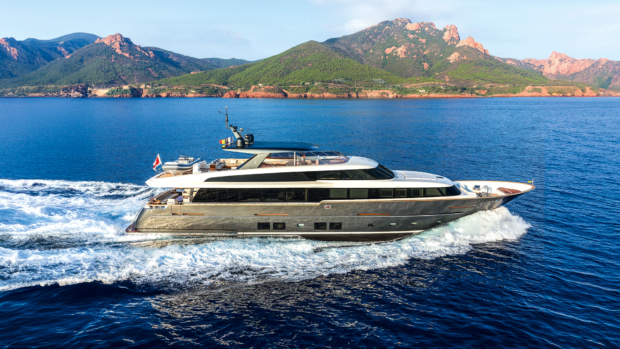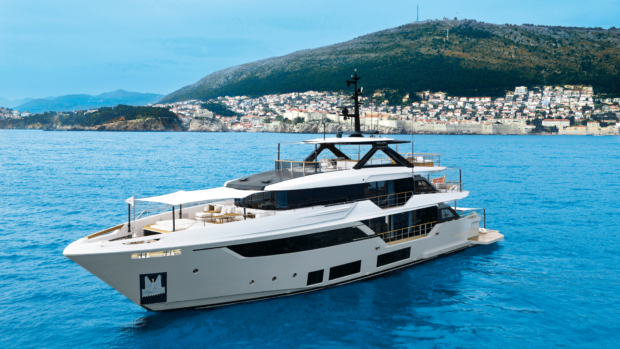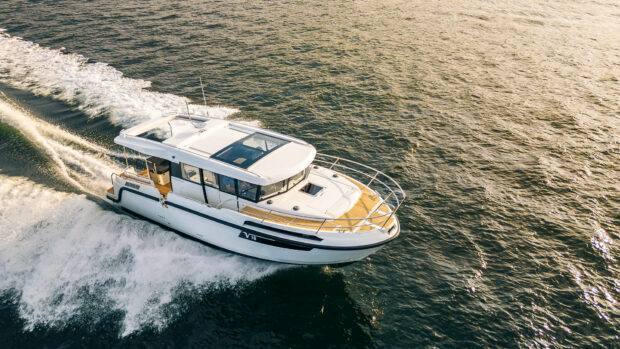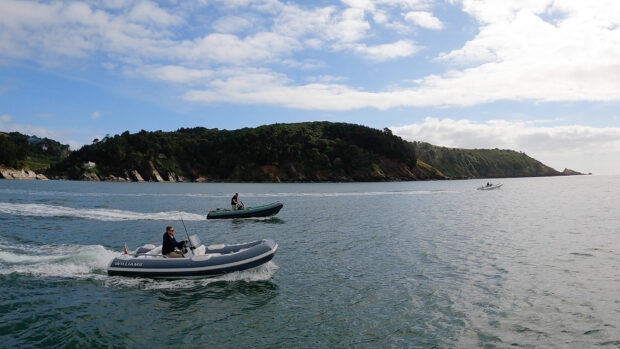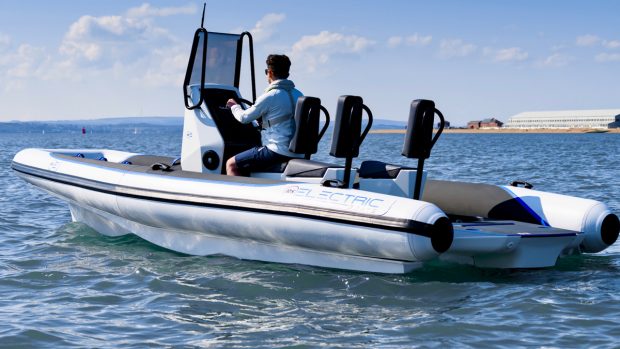It is with profound relief that the crew of Spirit of Cardiff head into the relative shelter of the Japanese island, Tanega Shima...
It is with profound relief that the crew of Spirit of Cardiff head into the relative shelter of the Japanese island, Tanega Shima… Clive Tully reports:
“For what was supposed to be “a little bit of bad weather which would die down shortly,” we seem to be heading for another kind of record. It’s 48 hours since we left Okinawa, and the wind is still blowing at 25 to 30 knots, and rain is sheeting across us almost horizontally.
Yesterday we thought things were bad when we throttled down to five knots. But worse, much worse was to come. As the light went (I’d like to say as the sun went down, but we never saw it) the waves got bigger and bigger, coming at us from the starboard beam.
A boat, like an aeroplane, is capable of moving about three axis. Pitching and yawing are relatively easy to live with, even when the movement is quite violent. But rolling is always sickening, particularly when you’re sliding sideways down a thirty foot wave. The moment of truth comes when Steve is on watch.
“It was when the sea appeared at the side windows,” he says. “The waves were pushing us right over. I’ve never experienced anything as bad as this.”
At this point, with the boat in serious danger of being rolled over, Alan decides to put the boat – and us – in survival mode. We deploy our survival equipment, and shut the engine down to not much more than tickover. “One thing the boat is very good at,” says Alan, “is behaving like a cork.”
Now we’re making one knot, just enough to keep the boat stable. We’ve been beaten black and blue by this storm for 40 hours. We’re exhausted, each sporting various injuries. Steve has cut his head, Alan has whacked his knee which has now blown up, and I’m bruised in various places.
Everything is soaking wet as well. Our three hatches (made by Californian company Bowmar) – one at the front and two in the roof – all leak badly. I guess we’ve pushed a lot of the equipment and fittings on the boat beyond what they were designed for.
The cushions for our bunks are saturated, and the carpet on the floor is soaked. Everything, absolutely everything is wet. Going to sleep with wet underneath you and wet dripping from above might seem horrific, but when you’re as exhausted as we are, it’s still possible. My various bits of electronics and camera kit have survived purely because they’re protected by Lowepro waterproof camera cases.
Gradually we make our way between two small islands south of the Japanese mainland island of Kyushu, managing to pick up some speed for a short while. “We’ve managed to cover more distance in the last twenty minutes than we have all night,” observes Alan.
We’re gaining shelter in the lee of Tanega Shima, lying just off the town of Hishino. We’ve had our first cup of tea and hot meal in two days, we’ve managed to get some air into the cabin, and started to dry things out.
We are however still over 500 miles from Choshi. In good conditions, that’s not much more than a day away. But we know that the moment we head out from the shelter of our friendly islands, we’re going to be in the thick of it once more.
We set out through the tidal race at the end of the islands, and the waves are still coming in big and strong. Bertie our weatherman won’t be able to give us another update for ten hours, so we have a choice. Either we batter our way into the storm once more, get wet, injured and at best make 50 miles, or we go back. So we’re doing the only sensible thing – we’re seeking shelter in the harbour at Hishino, and waiting till it blows through.”


